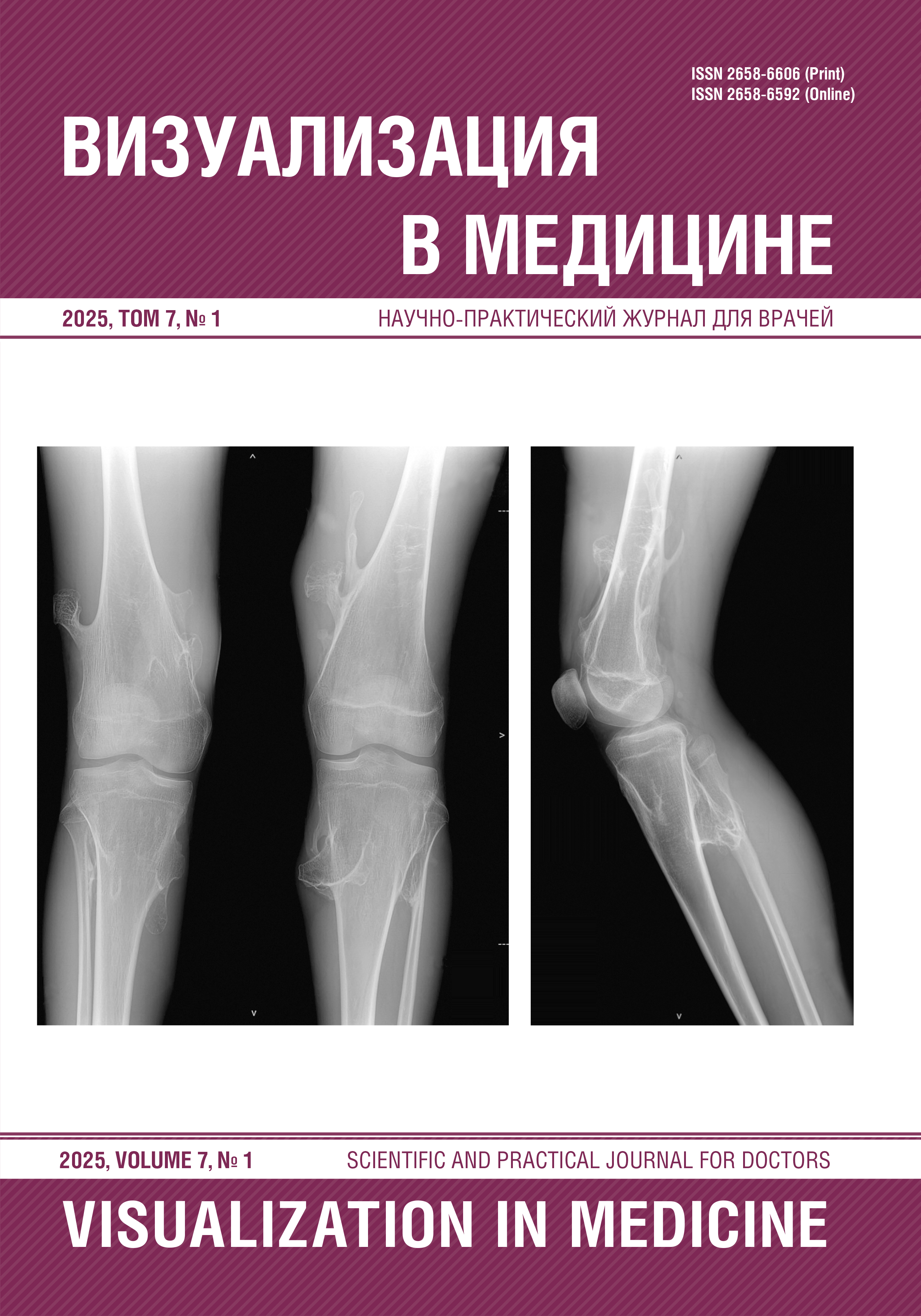MULTISPIRAL COMPUTED TOMOGRAPHY IN ASSESSING INDICATORS OF FUNNEL-SHAPED CHEST DEFORMITY IN CHILDREN OF DIFFERENT AGES WHEN PLANNING SURGICAL TREATMENT
Abstract
Funnel-shaped chest deformity is a deformity of the chest wall characterized by a concave bend of the sternum and the anterior sections of the ribs, of varying depth and shape. The computed tomography method allows you to determine the index of funnel-shaped deformation of the chest, to assess the rotation of the sternum, unlike the Gizhitskaya method, which allows you to determine only the degree of deformation. The X-ray method does not show a complete picture of the changes in the funnel-shaped deformity of the chest. Despite a significant amount of work devoted to determining the optimal age for surgical correction of funnel-shaped chest deformity based on the analysis of postoperative relapses, pain syndrome, progression of deformity during growth and quality of life of patients, the age dynamics of morphometric parameters of funnel-shaped chest deformity according to computed tomography remains insufficiently studied. The lack of a pattern of changes in the degree and nature of deformity depending on age limits the possibility of a reasonable choice of the timing of surgical treatment. The determination of the deformation index and the angle of rotation of the sternum plays an important role in assessing pathological changes in patients of different ages when planning surgical treatment. The purpose of our work was to evaluate the index of deformation and rotation of the sternum to determine the optimal age when planning surgical treatment.
References
Shamberger R.C. Congenital chest wall deformities. Curr Probl Surg. 1996;33:469–542. DOI:10.1016/s0011-3840(96)80005-0.
Fokin A.A., Steuerwald N.M., Ahrens W.A. et al. Anatomical, histologic, and genetic characteristics of congenital chest wall deformities. Semin Thorac Cardiovasc Surg. 2009;21:44–57. DOI: 10.1053/j.semtcvs.2009.03.001.
Потапчук А.А., Дидур М.Д. Осанка и физическое развитие детей. Программы диагностики и коррекции нарушений. СПб.; 2001.
Косулин А.В., Елякин Д.В., Охлопкова Е.И., Придатко О.Г., Клыбанская Ю.В., Дворецкий В.С. Хирургическое лечение врожденного кифоза на фоне множественных пороков развития позвонков. Педиатр. 2018;9(1):112–117. DOI: 10.17816/PED91112-117.
Косулин А.В., Елякин Д.В., Дмитриева Н.Н., Абзалиева А.Д., Блаженко А.А., Волченко Л.В. Случай хирургического лечения запущенного врожденного кифосколиоза. Педиатр. 2018;9(3):118–123. DOI: 10.17816/PED93118-123.
Разинова А.А, Гребенюк М.М., Поздняков А.В., Позднякова О.Ф., Малеков Д.А. Высокотехнологичные методы визуализации (физико-технические основы высокотехнологичных методов визуализации). 2019.
Robbins L.P. Pectus excavatum. Radiology case reports. 2011;6(1):460. DOI: 10.2484/rcr.v6i1.460.
Kelly RE. Jr. Pectus excavatum: historical background, clinical picture, preoperative evaluation and criteria for operation. Semin Pediatr Surg. 2008;17:181–93. DOI: 10.1053/j.sempedsurg.2008.03.002.
Brochhausen C., Turial S., Muller F.K., Schmitt V.H., Coerdt W., Wihlm J.M., Schier F., Kirkpatrick C.J. Pectus excavatum: history, hypotheses and treatment options. Interact Cardiovasc Thorac Surg. 2012;14(6):801–6. DOI: 10.1093/icvts/ivs045.
Cartoski M., Nuss D., Goretsky M. et al. Classification of the Dysmorphology of Pectus Excavatum. J Pediatr Surg. 2006;41(9):1573–81. DOI: 10.1016/j.jpedsurg.2006.05.055.



